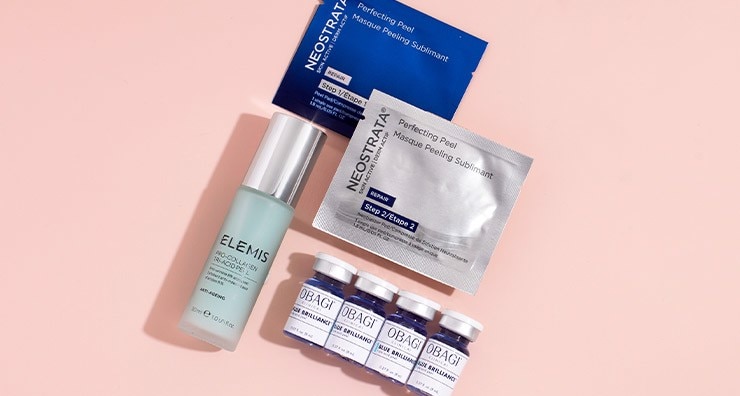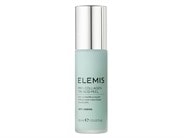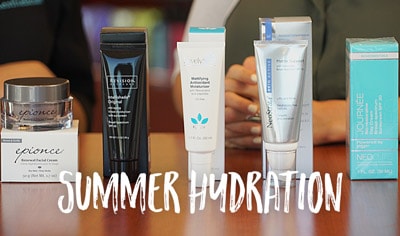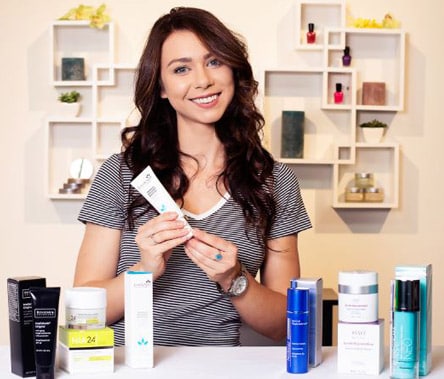Chemical peels are a much-talked about treatment used to reduce signs of aging, scarring and other skin conditions. However, do you really know what goes on during a chemical peel at your dermatologist’s office? To help you fully understand the chemical peel process, we’ll cover these topics:
If you’re curious about chemical peels, chances are you probably have a lot of questions. You might be wondering what to expect from the chemical peel process, including whether a chemical peel hurts and what to expect after a chemical peel is all over. And of course, what results can you expect, and what will chemical peel recovery time be like?
A chemical peel is a resurfacing treatment that removes the top layer or layers of skin so that your skin can grow back looking smoother, younger and brighter. Though the name itself sounds intense, there are varying strengths of chemical peels to suit different skin types and needs. Now, let’s tackle the chemical peel process one step at a time.
Dermatologists perform chemical peels (also called derma peeling or chemexfoliation) to reduce signs of aging such as wrinkles, fine lines and age spots. Your dermatologist might recommend a chemical peel to treat skin conditions such as melasma, acne or hyperpigmentation, or to reduce scarring. Though chemical peels are typically thought of as a facial treatment, they can also be applied to the hands, chest and neck.
Chemical peel results include softer, smoother skin with fewer fine lines and wrinkles. After a chemical peel, you may also see an improvement in discoloration or age spots. The strongest peels can help with scarring, deep wrinkles and more serious sun damage.
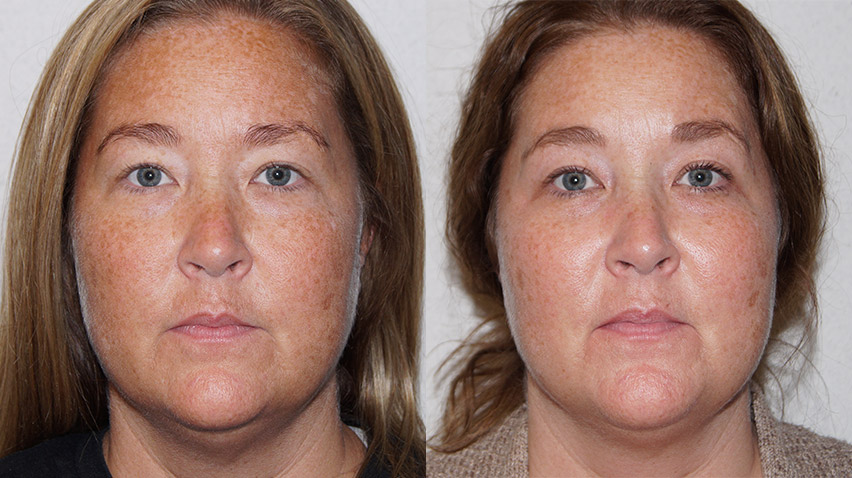
Real-life Chemical Peel Results: This LovelySkin Spa patient received the AFA Antioxidant Facial. See her skin before (left) and her results after (right), which include a significant lightening of sun spots.
Depending on the strength of the chemical peel, a licensed aesthetician or dermatologist will start the process by cleansing your skin. Next, they will apply the chemical peel solution to your skin using gauze, a cotton ball or a brush. Your aesthetician or dermatologist will watch your skin closely and make the call on when to either wash the solution off or apply a neutralizing solution to stop the peel process.
The chemical peels you receive in your dermatologist’s office or med spa are typically categorized into three types. A refreshing peel (also called a superficial, light or “lunchtime” peel) is the mildest, typically using alpha hydroxy acids or beta hydroxy acid to remove the outermost layer of skin. A stronger option is the medium peel, which uses trichloroacetic acid (TCA) to further penetrate the skin. The strongest option, a deep peel, uses phenol to penetrate to the lower dermal layer of your skin. You can also buy chemical peels to apply at home, and these formulas tend to be much gentler, making them suitable for weekly use.
”Do chemical peels hurt?” is one of the most frequently asked questions about the procedure. A light tingling, stinging or burning sensation is expected with milder peels. Because these sensations can be more intense during a deep peel, your dermatologist may use local anesthesia to numb your face during the procedure and a sedative to help you relax.
At-home chemical peels typically also cause tingling and redness, so we recommend doing a patch test on a small area of skin to gauge your reaction first before jumping into a full treatment.
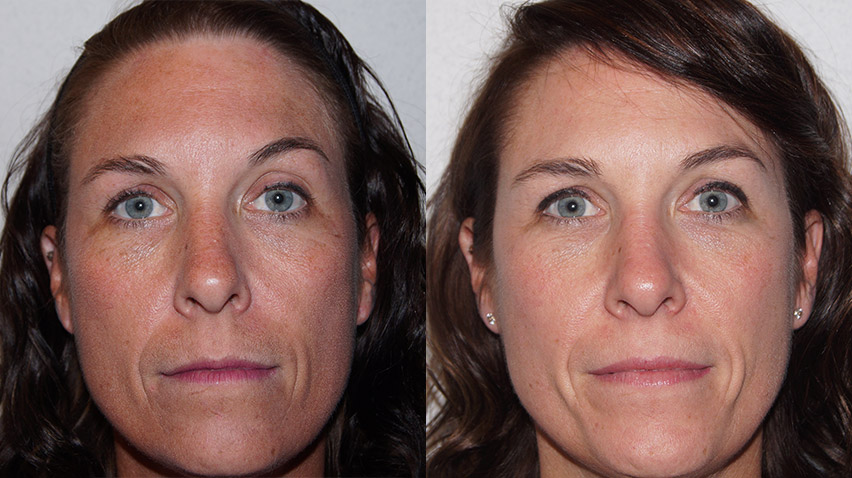
Real-life Chemical Peel Results: This LovelySkin Spa patient received the Clay Peel. See her skin before (left) and her results after (right), which include a more even skin tone.
Your chemical peel recovery process and amount of downtime recommended will depend on the strength of the peel you receive. Healing time can range from one day for a light peel up to one to two weeks for a medium peel. Some redness, swelling and even crusting or scaling is expected as part of the healing process.
For a deep peel, your dermatologist will apply ointment or surgical dressings and provide specific instructions for after-care at home until it’s time for you to return for follow-up visits to monitor healing.
After a chemical peel, your skin will be especially vulnerable to sun damage, so wear sunscreen or avoid direct sun as much as possible.
Pamper yourself after a chemical peel with these gentle, restorative products suitable for post-procedure skin.

This four-piece kit contains travel-sized containers of everything you need to soothe your skin during chemical peel recovery. The Milky Lotion Cleanser is formulated specifically for sensitive, post-peel skin, so you can use it to cleanse daily without irritation. The Enriched Firming Mask reduces inflammation with a proprietary blend of lipids and antioxidants. Next, the Renewal Calming Cream calms redness with colloidal oatmeal, while Priming Oil hydrates and nourishes the skin with safflower, coconut and meadowfoam oils.
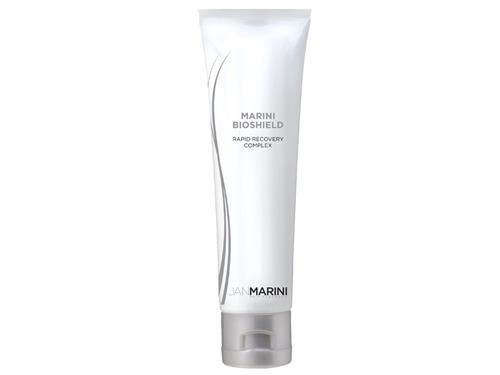
This nourishing balm provides multiple benefits for chemical peel recovery in just one step. Silicone helps reduce chemical peel recovery time and boost healing by protecting the skin against environmental irritants while SH-polypeptide-1, a type of growth factor, boosts cell turnover and elasticity. It has a matte finish that dries quickly and smoothly, so you can easily apply sunscreen or makeup after using.
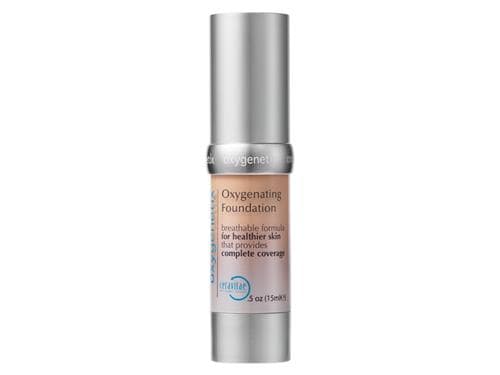
One of the trickiest parts of chemical peel recovery is wearing makeup. This aloe-based foundation is formulated specifically for covering irritation from facial treatments, skin wounds or conditions such as rosacea. “This is a truly innovative product that I wholeheartedly recommend to my patients who need to wear makeup after a chemical peel,” Dr. Schlessinger. “It actually delivers oxygen directly to the skin cells that need it, encouraging the healing process.”
If you can’t get to the spa for a professional treatment, try these at-home chemical peels.
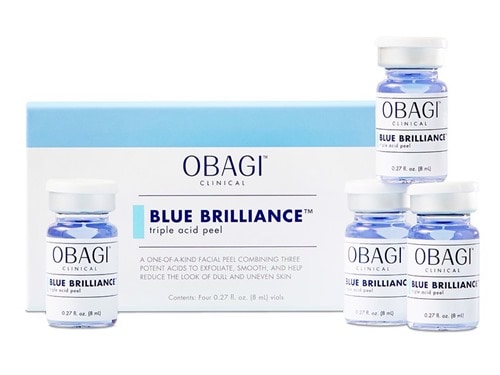
True to its name, this spa-quality peel features a triple threat of active acids: glycolic acid to brighten the skin, salicylic acid to unclog pores and lactic acid to soften and smooth. It’s suitable for all skin types except for sensitive and can be used up to once a week. The treatment itself comes in single-use vials that you can apply with a cotton pad, leave on for ten minutes, and then, rinse off with water.
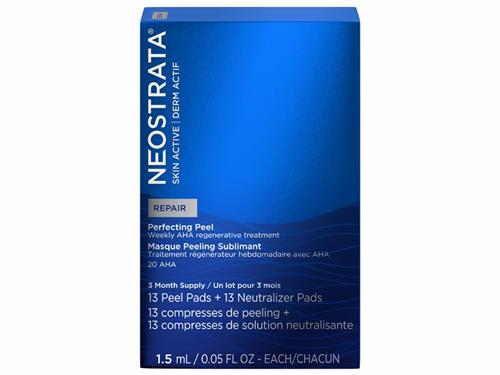
This two-step kit contains a three-month supply of everything you need to give yourself a weekly anti-aging peel right in the comfort of your own home. Just open the prepackaged peel pad, swipe it over your skin and follow up with the neutralizing pad ten minutes later before rinsing. Glycolic and citric acids team up to fade hyperpigmentation, reduce fine lines and improve overall skin texture.
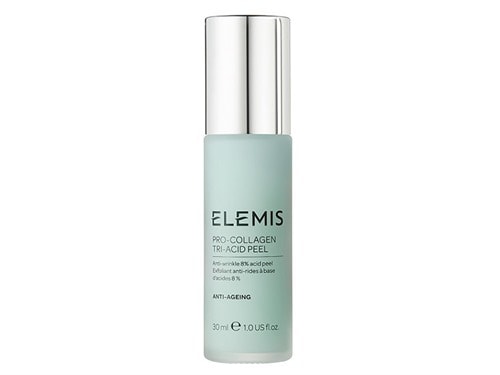
This gel-based peel contains a blend of three acids (mandelic, asiatic and lactobionic acid) to leave your skin soft and bright, while hydrating algae extracts such as chlorella and Padina pavonica firm the skin and replenish its moisture barrier. You need only a pea-sized amount of this concentrated formula for each treatment, which you can wash off with warm water after fifteen minutes.
Wearing sunscreen is especially important after a chemical peel, no matter what time of year you receive it. Read up on six of our favorite sunscreens perfect for protecting skin year-round.


